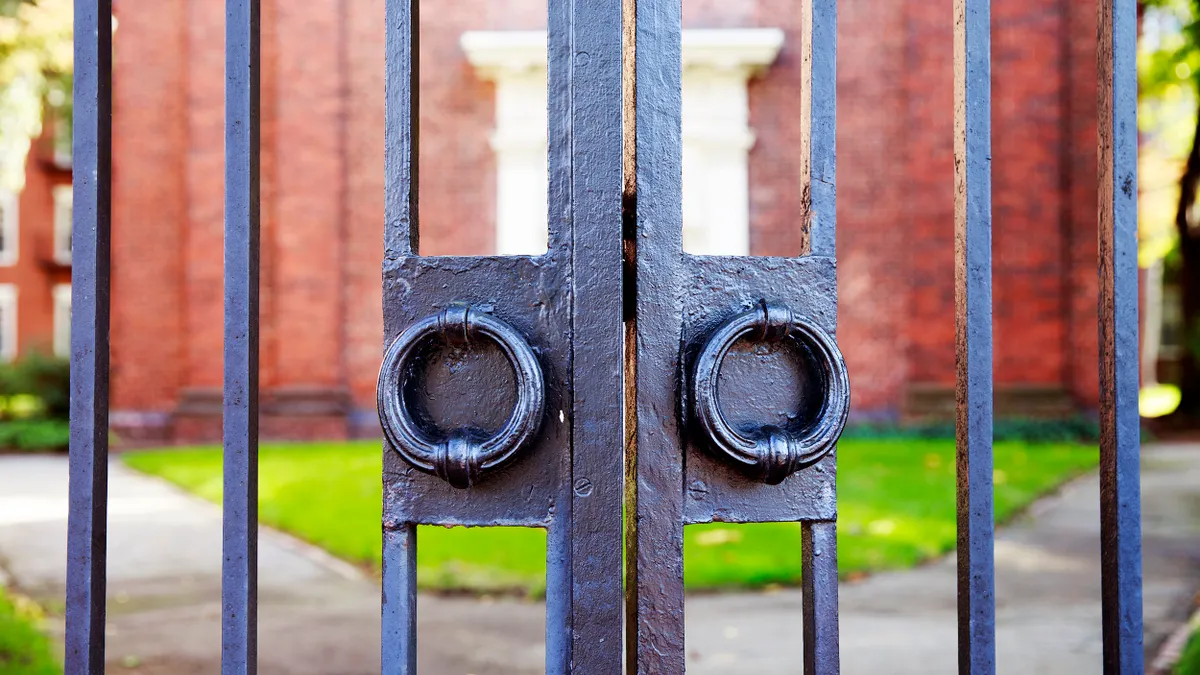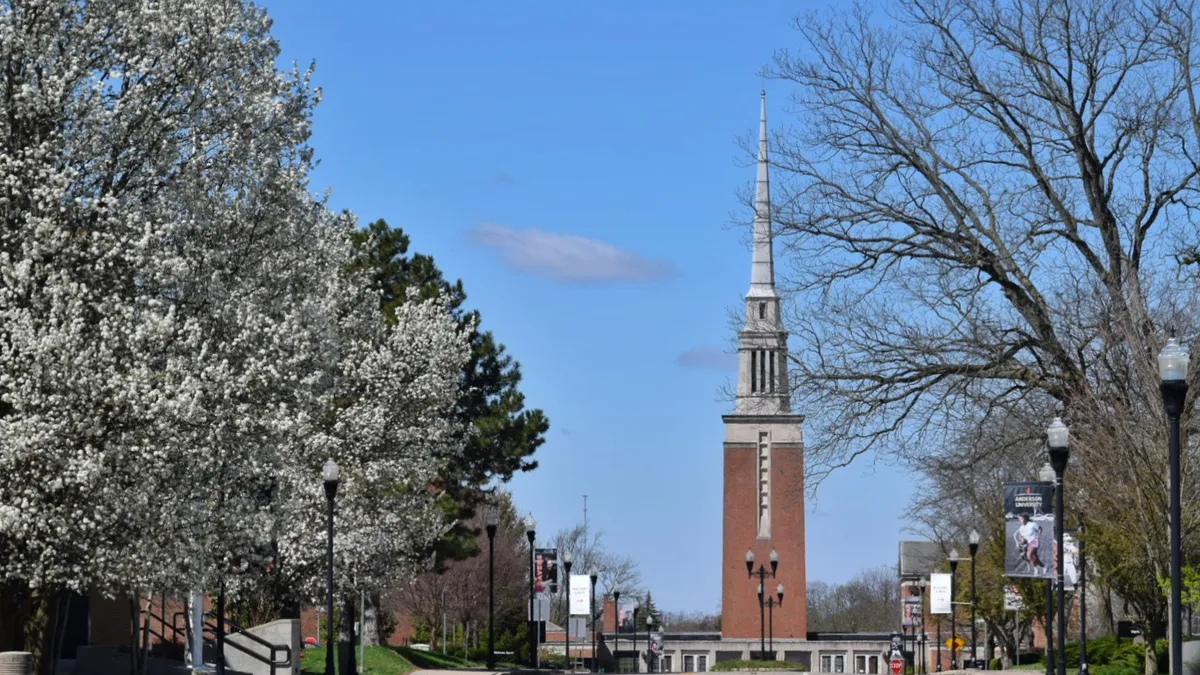Dive Brief:
- S&P Global Ratings gave nonprofit colleges and universities a negative outlook for the third-straight year, citing continued challenges that could do more to hurt than help institutions' credit ratings.
- However, well-resourced institutions with broader reach and recognition are expected to fare better than smaller, regional schools, the ratings agency noted in a report explaining its outlook.
- The outlook comes a month after Moody's Investors Service upgraded the sector's rating to stable for 2020, while Fitch Ratings kept its negative.
Dive Insight:
A common theme among all three ratings agencies' 2020 outlook reports is that the headwinds higher ed is coming up against — including the slow post-recession recovery in state funding, tuition price sensitivity, and decrease in the supply of high school graduates and international students — are affecting groups of schools differently.
Some institutions have adjusted to this scenario, which S&P calls the "new normal." Those colleges have implemented viable strategies for recruiting and retaining students, managing their budgets and finding additional sources of revenue.
That's not the case for all schools.
"We see the variance in terms of credit quality widening between higher-rated institutions and lower-rated institutions," said Jessica Wood, higher education sector lead for S&P and lead author of the report. "While our outlook is still negative for the sector, we anticipate more of that pressure and more of the negative rating actions at the lower end of our ratings distribution."
The schools on that end, S&P's report notes, tend to lack the size, reputation, revenue diversity or finances to address competition in higher education as effectively as higher-rated institutions.
Larger institutions will drive operating revenue growth in higher ed for the coming year, Moody's projected in its outlook, with gains of 3.5% to 4.5%. Small public and private institutions, meanwhile, should see their operating revenue increase 2% to 3% for the year.
The decline in state funding for higher education in the decade after the recession may have contributed to the disparity, according to research last year from the National Bureau of Economic Research. The drop off may have had a bigger impact on colleges whose main focus is granting degrees than on major research institutions, which are better able to raise tuition and fundraise to offset lower levels of state support.
That funding is growing again, if slowly, with 2020 expected to see the biggest annual increase in five years, according to the latest Grapevine report from the Center for the Study of Education Policy at Illinois State University and the State Higher Education Executive Officers Association. Just three states expect to see a decrease in funding for the year.
Online education has been posited as an alternative source of revenue for colleges that can help expand their reach and, in some cases, offer students a lower-cost option. However, the ratings agencies caution viewing it as a cure-all for enrollment woes, noting that the market has grown crowded.
S&P's report highlighted opportunities for higher ed this year, including continued strong activity in fundraising and research support, solid endowment returns, opportunities for partnerships and low interest rates to support financing. Still, Wood noted, these are more likely to benefit schools that have been less affected by demographic pressures and competition.
"There are pockets of improvement," she said.









